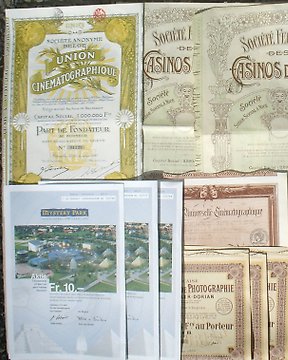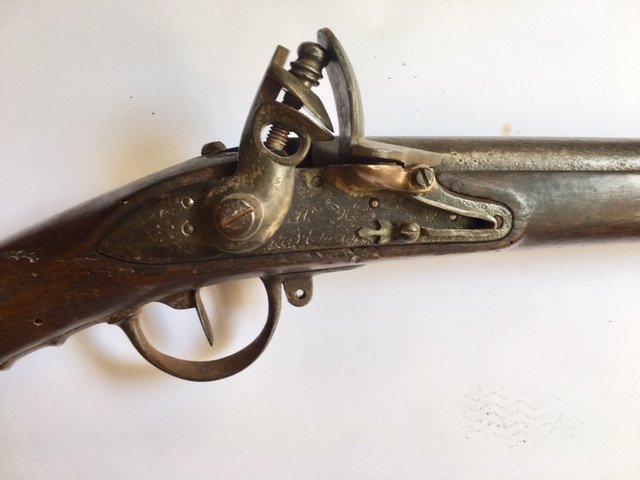
Bonds or shares collection - Cinema, Casinos, Theaters
No. 30770269

No. 30770269

Rare French Revolutionary Modèle 1777 rifle from Manufactory Saint-Etienne with a bayonet
Bayonet length: 46 cm
The lock mechanism is functioning well
Stamps at different places of the rifle (see pictures): "Manufacture Royale de St.-Etienne" and "PS 87 ", on a wooden butt the round mark is poorly read.
HISTORY
The musket Modèle 1777, and later Modèle 1777 corrigé en l'an IX (Model 1777 corrected in the year 1800, or IX in the French Revolutionary Calendar) was one of the most widespread weapons on the European continent.
It was part of a weapon family with numerous variants, e.g. for the light infantry, artillery and a musketoon for the cavalry.
After the French Revolutionary Wars, first consul Napoleon Bonaparte commissioned a rework; some minor modifications on the lock, bayonet and stock resulted in 1800 in the "corrected" model, also called "Modèle 1777 corrigé".
7 million muskets were produced, including variants 1800 (an IX), 1816 and 1822, but not including muskets like the Austrian 1798 or the Prussian 1809, which were mere clones of the French 1777. Until World War I, no other firearm was produced in such large numbers.
Properly trained French infantry were expected to be able to fire three volleys a minute with the 1777. A trained infantryman could hit a man sized target at 80 yards but anything further required an increasing amount of luck[1] and the musket became wildly inaccurate at long range. Compared to the British Brown Bess, it fired musket balls that fitted more tightly into the barrel resulting in a better accuracy but a lower rate of fire and more fouling issues.
The Grande Armée marched into the German countries and left approx. 750,000 muskets retreating in 1815; until about 1840, French weapons were used in Germany.
How to buy on Catawiki
1. Discover something special
2. Place the top bid
3. Make a secure payment